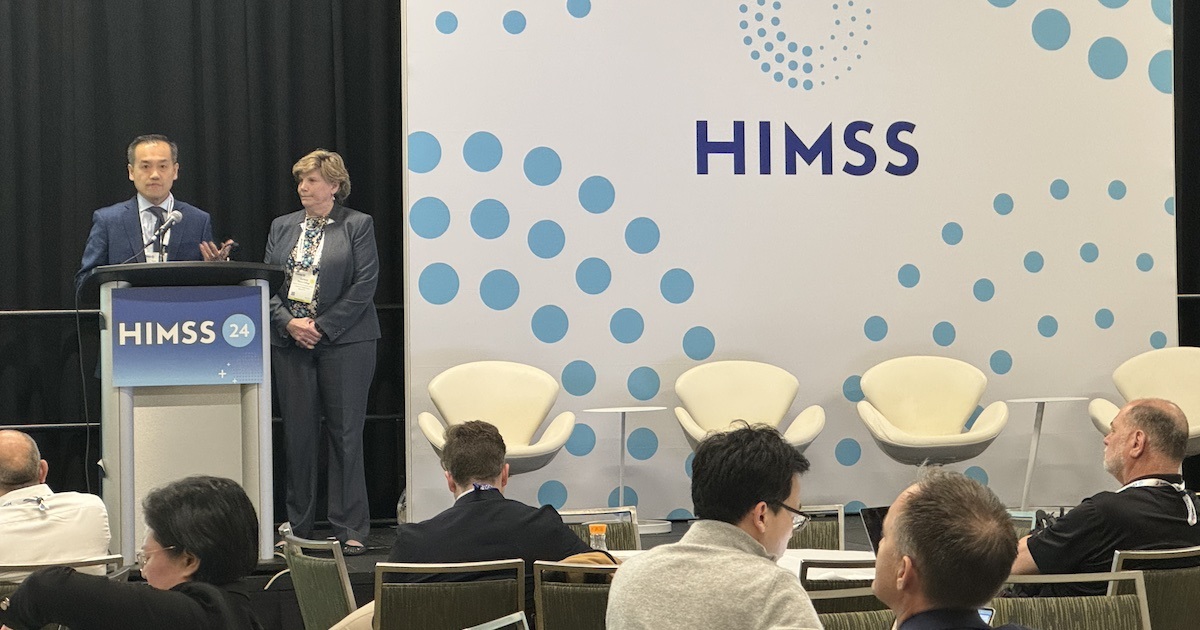
In the realm of modern healthcare, the implementation of virtual video telemedicine in emergency settings has emerged as a game-changer. Stanford Healthcare’s pioneering virtual fast-track program, showcased at HIMSS24, epitomizes this transformative approach. Spearheaded by Patrice Callagy and Sam Shen, the initiative aimed to expedite patient triage and optimize clinical workflows. Through innovative utilization of technology, including virtual consultation zones and integrated EHR platforms, Stanford Healthcare achieved remarkable outcomes. Patients benefited from expedited access to care and heightened satisfaction levels, underscoring the efficacy of virtual video telemedicine in revolutionizing emergency care delivery.
The convergence of healthcare and technology has catalyzed a paradigm shift in emergency care delivery, with virtual video telemedicine emerging as a potent tool in this transformation. At HIMSS24, Stanford Healthcare unveiled its groundbreaking virtual fast-track program, designed to address the inherent challenges of traditional emergency department setups. Led by visionary leaders Patrice Callagy and Sam Shen, the initiative sought to leverage telemedicine to streamline patient triage and enhance clinical efficiency. By harnessing digital tools and integrated EHR platforms, Stanford Healthcare endeavored to redefine patient-provider interactions and elevate the standard of emergency care delivery.
At the forefront of this innovative approach is Stanford Healthcare, whose representatives showcased the success of their virtual fast-track program during the HIMSS24 preconference Virtual Care Forum. Spearheaded by Patrice Callagy, Executive Director of Emergency Services, and Sam Shen, Clinical Professor and Vice Chair of Clinical Operations and Quality in the Department of Emergency Medicine, Stanford Healthcare embarked on a transformative journey to revolutionize emergency care delivery.
The genesis of this initiative can be traced back to the onset of the COVID-19 pandemic, which prompted a paradigm shift in healthcare delivery models. Recognizing the inherent limitations of traditional emergency department setups, Callagy and Shen sought to harness the power of telemedicine to transcend geographical barriers and redefine patient-provider interactions.
Traditionally, telemedicine was constrained by the requirement of a nurse’s physical presence to facilitate remote consultations. However, with a visionary approach, the team at Stanford Healthcare conceptualized a system wherein providers could remotely engage with patients, thus circumventing logistical challenges and optimizing resource utilization.
In a remarkable testament to their commitment, a new virtual video telemedicine model was swiftly implemented within a week, marking a significant milestone in the evolution of emergency care. Central to this innovation was the establishment of a virtual fast-track zone within the emergency department lobby, equipped with state-of-the-art digital tools. This novel setup empowered physicians to remotely assess and manage a multitude of patients, thereby alleviating strain on conventional clinical resources.
Moreover, leveraging the electronic health record (EHR) infrastructure, the team devised an emergency department video-visit track-board, facilitating seamless patient triage and prioritization. Through this integrated platform, physicians could efficiently identify patients in the queue and conduct telehealth consultations in real time, ensuring timely intervention and continuity of care.
The impact of this virtual fast-track program transcended mere operational efficiency, heralding a paradigm shift in patient care delivery. In stark contrast to the traditional model characterized by prolonged wait times and fragmented care, the virtual approach enabled physicians to attend to multiple low-acuity cases concurrently, significantly reducing patient throughput times.
A comprehensive analysis of patient encounters revealed a spectrum of common ailments addressed through the virtual platform, ranging from sore throat and chest pain to rash and ear pain. Notably, despite the inherent challenges posed by remote consultations, patients consistently expressed high levels of satisfaction, surpassing those recorded in conventional emergency department settings.
Central to the success of this initiative was the unwavering commitment to enhancing patient outcomes and optimizing resource utilization. By expediting access to medical attention and minimizing unnecessary delays, the virtual model epitomized patient-centric care delivery, wherein the patient’s needs remained paramount.
Looking ahead, the adoption of virtual video telemedicine in emergency care holds immense promise for revolutionizing healthcare delivery paradigms. As healthcare organizations worldwide navigate the complexities of an evolving landscape, initiatives such as the virtual fast-track program at Stanford Healthcare serve as a beacon of innovation and resilience.
The adoption of virtual video telemedicine in emergency care represents a seismic shift in healthcare delivery paradigms, with far-reaching implications for patient outcomes and operational efficiency. Stanford Healthcare’s virtual fast-track program stands as a testament to the transformative potential of telemedicine in revolutionizing emergency care. By prioritizing patient-centricity and leveraging technology to transcend geographical barriers, healthcare organizations can pave the way for a future where equitable access to quality care is the norm. As we navigate the complexities of a rapidly evolving healthcare landscape, initiatives such as the virtual fast-track program underscore the imperative of innovation and resilience in shaping the future of emergency care delivery.




